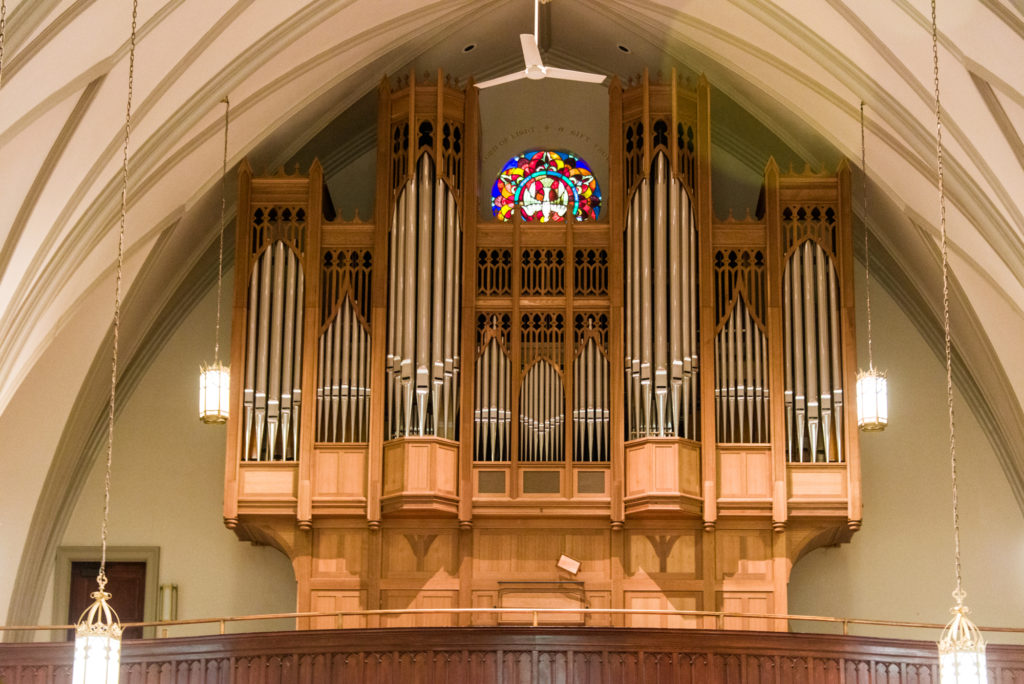 Clavier I, 61 keys
Clavier I, 61 keys
- Bourdon 16’ (24 pipes of wood, 44 of 26% tin)
- Montre 8’ (68 pipes of 75% tin)
- Flûte harmonique 8’ (12 pipes of wood. 56 of 50% tin)
- Gemshorn 8’ (68 rebuilt pipes)
- Prestant 4’ (68 pipes of 50% tin)
- III-V Plein-Jeu 2⅔’ (251 pipes of 50% tin)
Clavier II, expressive, 61 keys
- Bourdon 8’ (18 pipes of wood, 43 of 26% tin)
- Flûte 4’ (61 pipes of 50% tin)
- Nasard 2⅔’ (61 pipes of 50% tin)
- Doublette 2’ (61 pipes of 50% tin)
- Tierce 1⅗’ (58 pipes of 50% tin, C1-a58)
Clavier III, expressive, 61 keys
- Quintaton 16’ (37 rebuilt pipes, 31 of 50% tin)
- Gambe 8’ (68 rebuilt pipes)
- Voix céleste 8’ (49 rebuilt pipes)
- Cor de nuit 8’ (12 pipes of wood, 56 of 26% tin)
- Salicet 4’ (68 pipes of 50% tin)
- Trompette harm. 8’ (68 pipes with 50% tin resonators)
- Hautbois 8’ (68 pipes with 50% tin resonators)
Pédale, 32 keys
- Resultant 32’ Pipes from #20
- Soubasse 16’ 32 rebuilt pipes
- Quintaton 16’ 32 rebuilt pipes from #12 above
- Grosse Flûte 8’ 12 pipes from #3 above, 20 of 50% tin
- Flûte 4’ 20 pipes from #22 above, 12 of 50% tin
- Bombarde 16’ 32 pipes with 50% tin resonators
Couplers:
- Tirasse I
- Tirasse II
- Tirasse III
- Tirasse III – 4’
- I-I 16’
- I-I 4’
- II-I 8’
- III-I 16’
- III-I 8’
- III-I 4’
- III-II 8’
- III-III 16’
- III-III 4’
Electric stop action includes couplers, pistons, sequencer, tutti, general cancel, and 100 levels of memory
24 stops, 25 ranks, 1458 pipes
Accessories and Details of Construction:
Suspended mechanical key action
Two tremblants
Flat/parallel (Cavaillé-Coll-style) pedal keyboard with additional
interchangeable AGO-style pedal keyboard
One set of mechanically operated swell shutters enclosing two manual divisions
Equal temperament tuning